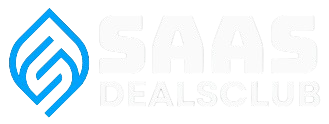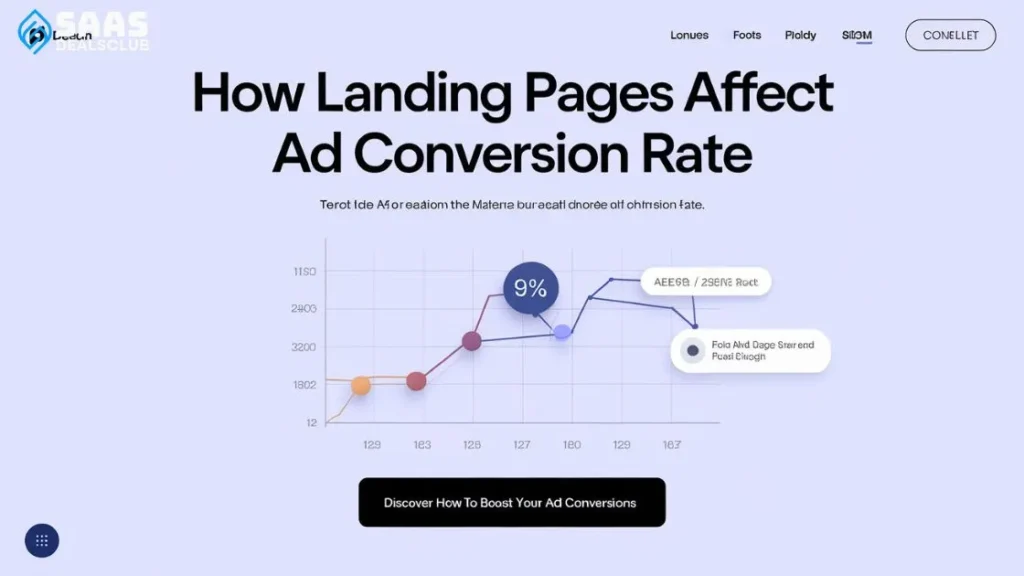Landing pages play a crucial role in online advertising. They can significantly impact your ad conversion rate.
A well-designed landing page can be the difference between a visitor and a customer. It’s the first impression users get after clicking an ad. If the landing page is relevant and engaging, users are more likely to convert. On the other hand, a poorly designed landing page can lead to high bounce rates and lost opportunities.
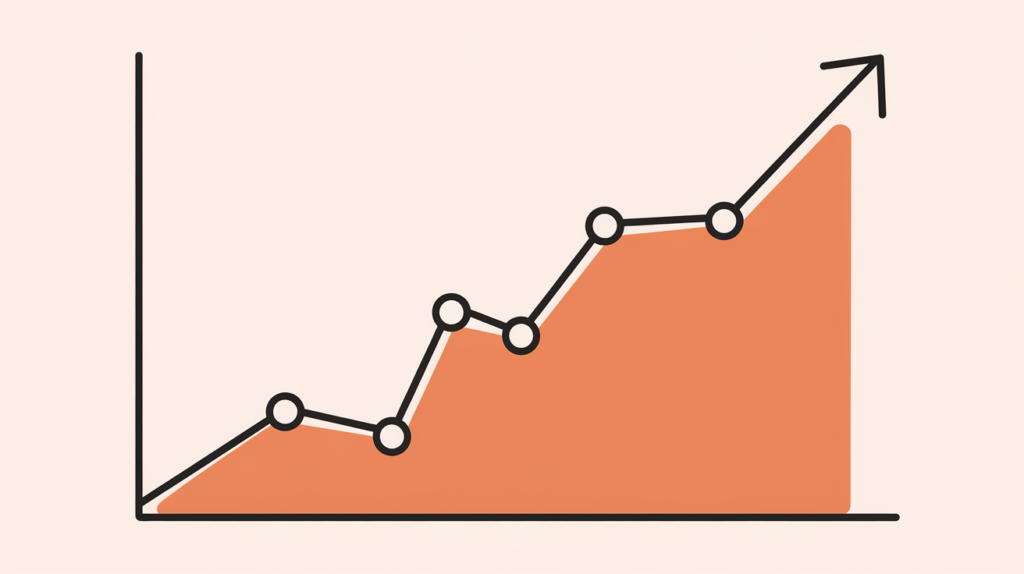
Understanding how landing pages affect ad conversion rates is essential for effective digital marketing. In this post, we will explore the key factors that make landing pages successful. We will also discuss how to optimize them to improve your ad conversion rates.
“Landing pages play a crucial part in enhancing conversion rates through effective design, targeted messaging, and compelling calls to action. Your advertising efforts hinge on one critical factor: the effectiveness of your landing pages. Optimizing your landing pages directly influences your conversion rate, ensuring that your potential customers take the desired action after clicking on your ads.”
Table of Contents
ToggleIntroduction To Landing Pages
Landing pages play a crucial role in digital marketing. They are designed to convert visitors into leads or customers. Understanding their impact on ad conversion rates is key for marketers. A well-crafted landing page can significantly improve your campaign results.
Importance Of First Impressions
The first impression matters a lot. It sets the tone for the user’s experience. A clean, professional design builds trust quickly. Clear, compelling headlines grab attention. Visitors decide in seconds if they will stay or leave. Hence, your landing page must be visually appealing and easy to navigate.
Role In Marketing Campaigns
Landing pages are central to marketing campaigns. They focus on a single goal, making them effective. Unlike homepages, they eliminate distractions. This helps direct users towards the desired action. Whether it’s filling out a form or making a purchase, the goal is clear. This focus increases the chances of conversion.
Elements Of Effective Landing Pages
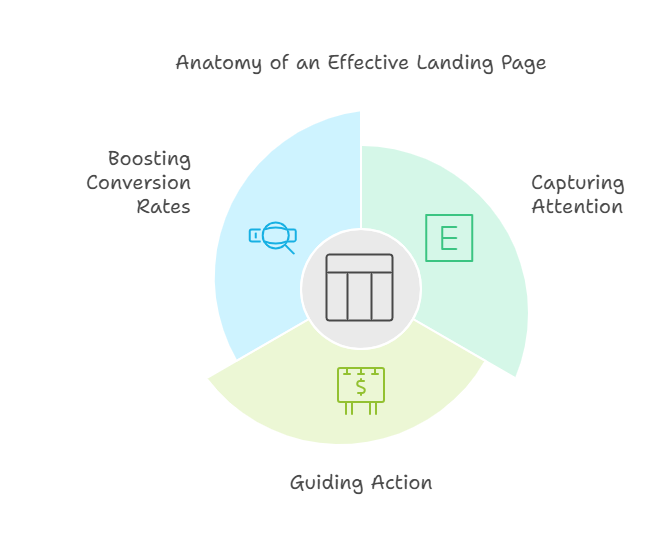
Effective landing pages are crucial for boosting your ad conversion rates. They help capture the visitor’s attention and guide them towards taking action. The right elements on your landing page can make a significant difference.
Here, we’ll discuss two key components: Compelling Headlines and Engaging Visuals.
Compelling Headlines
Your headline is the first thing visitors see. It must grab their attention instantly. A compelling headline should be clear, concise, and relevant. It should communicate the main benefit or value proposition.
- Clear and Direct: Avoid vague language. Be specific about what you offer.
- Benefit-Oriented: Highlight what the visitor will gain.
- Concise: Keep it short. Ideally, under 10 words.
Example: “Boost Your Sales by 30% with Our Tool” is direct and benefit-oriented.
Engaging Visuals
Visuals play a vital role in keeping visitors engaged. They help break up text and make your message more memorable. Use high-quality images that support your content.
- Relevant Images: Ensure visuals align with your message.
- High Quality: Use clear, professional images.
- Balanced Layout: Avoid clutter. Balance text and visuals.
Consider using videos to explain complex ideas. Videos can increase engagement and time spent on the page.
Effective landing pages combine compelling headlines and engaging visuals. These elements work together to capture attention and drive conversions.
User Experience And Design
The design and user experience of your landing page can make or break your ad conversion rate. A well-designed page that offers a seamless user experience encourages visitors to take the desired action. This section will delve into two key aspects of user experience and design: mobile responsiveness and navigation simplicity.
Mobile Responsiveness
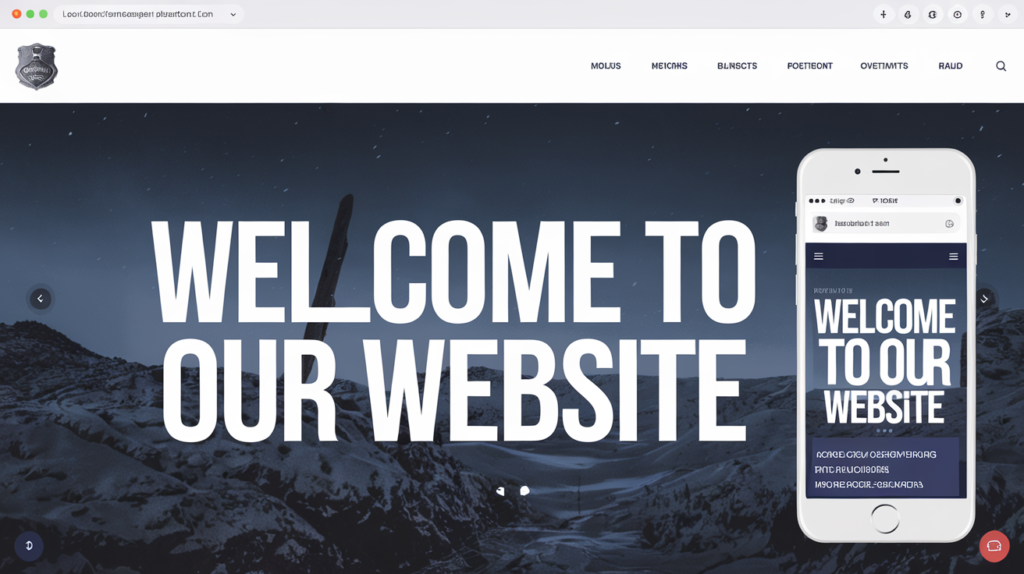
Most users access the internet through their mobile devices. So, ensuring your landing page is mobile-friendly is crucial. A mobile-responsive design adapts to different screen sizes. This guarantees a smooth user experience.
Here are some tips to ensure your landing page is mobile-responsive:
- Use a responsive design framework like Bootstrap.
- Optimize images and videos for faster load times.
- Ensure buttons and links are easy to click.
- Use legible fonts and appropriate text sizes.
A mobile-friendly landing page can boost your ad conversion rates significantly. Users are more likely to convert if they can easily navigate and interact with your page on their mobile devices.
Navigation Simplicity
Simple navigation is another critical factor in enhancing user experience. Visitors should find what they are looking for quickly and easily. Complex navigation can frustrate users and lead to higher bounce rates.
To achieve simple navigation, consider the following:
- Use a clear and concise menu structure.
- Limit the number of menu items.
- Include a search bar for easy access to information.
- Use breadcrumbs to help users track their location on the site.
A straightforward navigation system keeps users engaged and reduces the chances of them leaving your page. This, in turn, helps improve your ad conversion rates.
Content Relevance
Content relevance plays a crucial role in the success of landing pages. Ensuring that your landing page content is relevant to your ad copy boosts your ad conversion rate. This section will explore the importance of content relevance through alignment with ad copy and focusing on your target audience.
Alignment With Ad Copy
Your landing page should match the promise made in your ad. Consistency in messaging builds trust and reduces bounce rates. Visitors should see a clear connection between the ad they clicked and the content on your landing page.
Ensure that headlines and key messages on your landing page echo the ad copy. This alignment reassures users that they are in the right place. It improves their experience and increases the likelihood of conversions.
Target Audience Focus
Understanding your target audience is essential. Tailor your landing page content to address their needs and preferences. Identify their pain points and provide solutions that resonate with them.
Use language and visuals that appeal to your specific audience. Personalize content to make it relevant and engaging. This focus on the audience enhances their connection to your offer and boosts conversion rates.
Call To Action (cta)
A Call to Action (CTA) is crucial for landing pages. It directs visitors on what to do next. A well-designed CTA can boost your ad conversion rate. Let’s explore two key aspects: Placement and Visibility, and Action-Oriented Language.
Placement And Visibility
The position of your CTA on a landing page matters. Place it above the fold so visitors see it without scrolling. Ensure it stands out from other elements. Use contrasting colors to make it pop.
Test different placements. Try the top, middle, or bottom of the page. See which position gets more clicks. Make sure it’s easy to find and not buried under other content. A visible CTA increases the chance of conversions.
Action-oriented Language
Words matter in a CTA. Use action verbs to encourage clicks. Words like “Buy,” “Sign Up,” or “Get Started” are effective. They tell visitors exactly what to do.
Keep the language simple and direct. Avoid jargon or complex phrases. Short, clear commands work best. For example, “Download Now” is better than “Start Your Download.” The right words can make a big difference.
A/b Testing Strategies
Landing pages play a critical role in ad conversion rates. Using A/B testing strategies helps optimize these pages for better performance. This involves comparing two versions of a landing page to see which performs better.
Testing Different Elements
A/B testing involves changing one element at a time. This method shows which changes improve conversion rates. Here are some elements to test:
- Headlines: Try different headlines to see which grabs attention.
- Call-to-Action (CTA): Test different CTA buttons, such as color and text.
- Images: Change images to see what resonates with users.
- Form Fields: Adjust the number of form fields to see the impact on submissions.
Analyzing Results
After running A/B tests, it’s time to analyze the results. Use tools like Google Analytics to track performance. Look at metrics such as:
- Conversion Rate: The percentage of visitors who complete the desired action.
- Bounce Rate: The percentage of visitors who leave without interacting.
- Average Time on Page: The amount of time visitors spend on the page.
Compare these metrics between the two versions. Determine which version performs better. Then, implement the winning changes on your landing page.
Conversion Rate Optimization (CRO)

Conversion Rate Optimization (CRO) is the process of increasing the percentage of visitors who complete a desired action on a website. By improving the user experience and removing obstacles, businesses can significantly boost their ad conversion rates. This section will delve into how landing pages can be optimized through CRO.
Identifying Weak Points
Before making any changes, identify areas where the landing page underperforms. Use tools like Google Analytics to track user behavior. Check for high bounce rates, low time on the page, and low conversion rates. These metrics can highlight where visitors lose interest or face obstacles.
Surveys and user feedback are also valuable. Ask visitors what they find confusing or unappealing. This qualitative data can reveal issues that analytics might miss. For instance, users might dislike the color scheme or find the content untrustworthy.
Another method is A/B testing. Create two versions of a landing page and see which performs better. Test different headlines, images, and calls to action. This method provides concrete evidence on what works and what does not.
Implementing Improvements
Once the weak points are identified, it’s time to make changes. Begin with the most critical areas.
- Headlines: Ensure they are clear and compelling. They should grab attention and explain the value proposition quickly.
- Images: Use high-quality, relevant images. They should support the message and not be distracted.
- Call to Action (CTA): Make the CTA button prominent and action-oriented. Use colors that stand out and words that prompt action.
Improving load times is also crucial. Slow pages frustrate users and lead to high bounce rates. Compress images, use efficient code, and leverage browser caching.
Ensure mobile-friendliness. Many users access landing pages from mobile devices. A responsive design enhances user experience and boosts conversions.
Lastly, simplify the form fields. Only ask for essential information. Lengthy forms can deter users. Fewer fields can increase the likelihood of form completion.
Regularly review and update the landing page based on new data and trends. Continuous improvement is key to maintaining high conversion rates.
Measuring Success
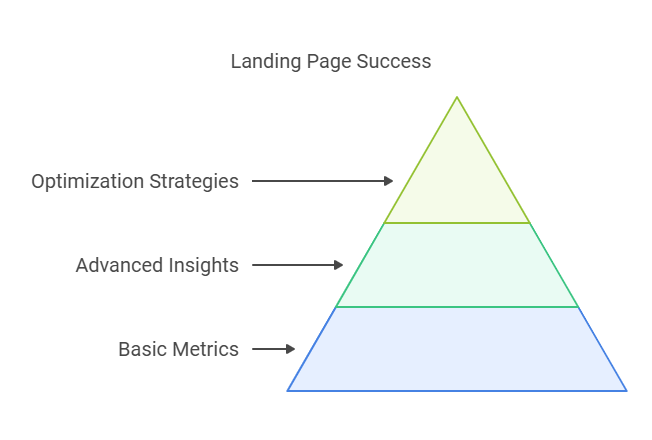
Understanding the success of your landing pages is essential for improving ad conversion rates. Measuring success helps you identify what works and what doesn’t. This can lead to better optimization and higher returns. Let’s explore the key performance indicators (KPIs) and how to calculate the return on investment (ROI).
Key Performance Indicators
KPIs are vital metrics that show how well your landing page performs. Here are some important KPIs to track:
- Conversion Rate: The percentage of visitors who complete the desired action.
- Bounce Rate: The percentage of visitors who leave without interacting.
- Average Time on Page: The average duration visitors spend on the page.
- Click-Through Rate (CTR): The percentage of visitors who click on a link or button.
- Cost Per Conversion: The cost to acquire one conversion.
Roi Calculation
Calculating the ROI of your landing pages helps assess their financial performance. Use the following formula:
ROI = (Net Profit / Cost of Investment) x 100
Here’s how to break it down:
- Determine the net profit generated from the landing page.
- Calculate the cost of investment (ad spend, design costs, etc.).
- Apply the formula to find the ROI percentage.
For example, if the net profit is $500 and the cost is $200, the ROI is:
ROI = ($500 / $200) x 100 = 250%
This means you earned 250% of your investment back.
Case Studies And Examples
Landing pages play a crucial role in boosting ad conversion rates. Effective design and clear messaging can significantly increase user engagement. Successful case studies show that optimized landing pages lead to more conversions.
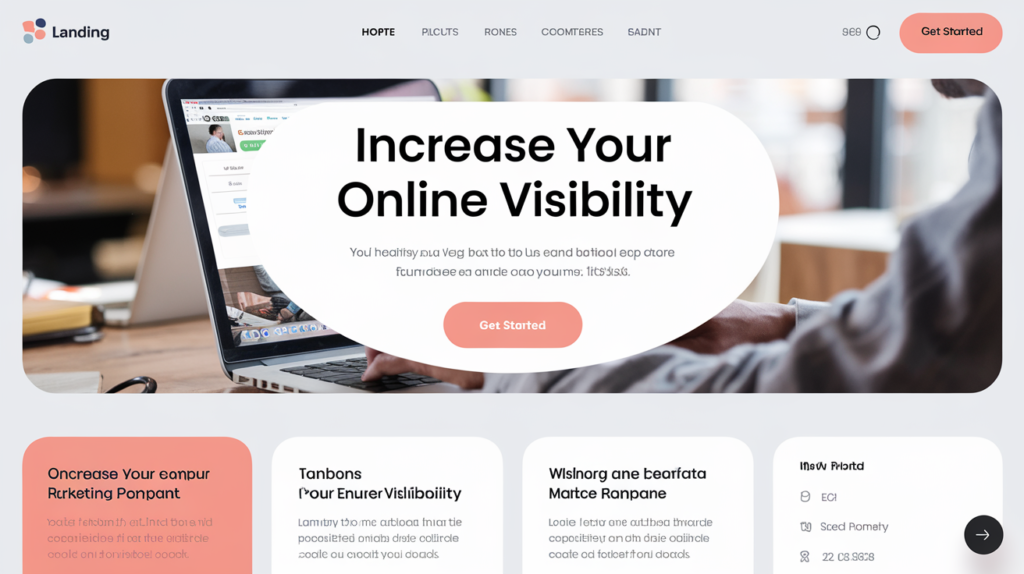
Landing pages play a crucial role in boosting ad conversion rates. By showcasing relevant case studies, we can better understand their impact. Real-life examples provide valuable insights. They show what works and what doesn’t. Let’s dive into some successful campaigns and the lessons learned.
Successful Campaigns
One online store improved its conversion rate by 35%. They used a clear call-to-action (CTA) button. The button was prominently placed above the fold. This made it easy for visitors to engage. The page also featured high-quality images of products. This attracted attention and kept visitors interested.
Another example involves a software company. They optimized their landing page with trust signals. These included customer testimonials and security badges. Their conversion rate increased by 20%. The clear and concise copy played a key role. It explained the product’s benefits in simple terms.
Lessons Learned
First, always place the CTA button where it’s easily visible. This encourages user interaction. Second, use high-quality visuals. Images should be relevant and engaging. They help hold the visitor’s attention. Third, add trust signals like testimonials and security badges. These build credibility and trust.
Fourth, keep your copy clear and straightforward. Avoid jargon and complex sentences. Explain the benefits in a way that’s easy to understand.
In summary, effective landing pages can significantly boost ad conversion rates. They should be visually appealing, trustworthy, and easy to navigate. Implementing these lessons can lead to more successful campaigns.
Future Trends
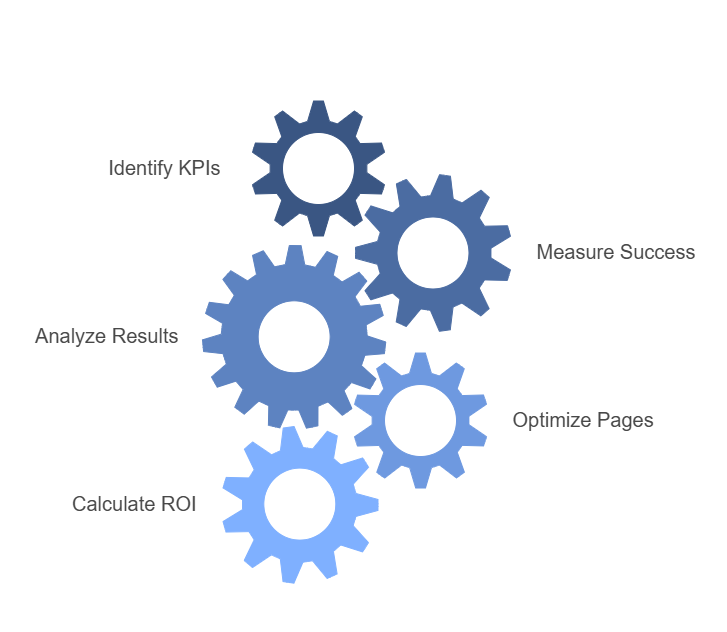
Future trends in landing pages hold immense potential for improving ad conversion rates. As technology advances, landing pages are poised to become more dynamic and engaging. Staying ahead of these trends can help businesses enhance their online presence and drive more conversions.
Emerging Technologies
Emerging technologies are changing how landing pages function. AI-powered chatbots can provide instant customer support, improving user experience. Interactive elements, such as quizzes or surveys, can engage visitors and gather valuable data. Personalization tools can tailor content based on user behavior, increasing relevance and engagement.
Voice search optimization is also becoming crucial. More people use voice assistants like Siri and Alexa to search online. Landing pages optimized for voice search can capture this growing audience. Fast loading times remain essential. Technologies like AMP (Accelerated Mobile Pages) help ensure quick access to content.
Predictions For Landing Pages
Landing pages are expected to become more interactive and personalized. Dynamic content will likely replace static content. This means users will see different versions of the same landing page based on their preferences and behavior. Video content will play a larger role. Videos can explain products or services more effectively, keeping visitors engaged longer.
The mobile-first design will be a priority. With more people browsing on mobile devices, landing pages must be optimized for small screens. This includes easy navigation, fast loading times, and clear calls to action. Data-driven design will also rise. Analyzing user data can help create more effective landing pages tailored to audience needs.
Frequently Asked Questions
What Is A Landing Page?
A landing page is a standalone web page created for a marketing campaign. It’s designed to capture visitor information through a form.
How Do Landing Pages Boost Conversions?
Landing pages boost conversions by focusing on a single call-to-action. They reduce distractions and guide visitors toward completing a specific goal.
What Elements Should A Landing Page Have?
A landing page should have a clear headline, engaging content, a strong call-to-action, and a form. Testimonials and visuals can enhance credibility.
Can Landing Page Design Affect Conversion Rates?
Yes, landing page design significantly affects conversion rates. A well-designed page improves user experience and encourages visitors to take action.
Conclusion
Effective landing pages boost ad conversion rates significantly. Clear, concise content engages visitors. Strong headlines capture attention. Compelling calls-to-action drive clicks. Visual appeal enhances user experience. Fast-loading pages reduce bounce rates. Streamlined forms encourage submissions. Testing and optimizing improve results over time.
Prioritize user needs for better performance. High-quality landing pages lead to more conversions. Implement these strategies to see positive changes in your campaigns.
